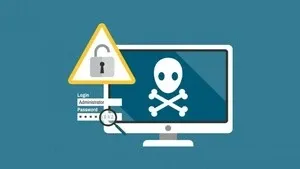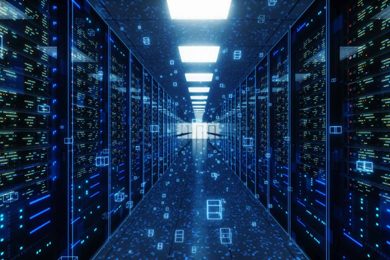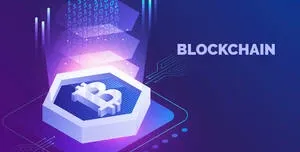This plan includes
- Limited free courses access
- Play & Pause Course Videos
- Video Recorded Lectures
- Learn on Mobile/PC/Tablet
- Quizzes and Real Projects
- Lifetime Course Certificate
- Email & Chat Support
What you'll learn?
- Networking Fundamentals: Introduction to networking concepts, OSI and TCP/IP models, network topologies, protocols, and standards.
- Network Infrastructure: Understanding network components, such as routers, switches, firewalls, access points, and network cabling.
- Network Operations: Configuring and managing network devices, network troubleshooting methodologies, network performance optimization, and network monitoring
- Network Security: Basics of network security, common security threats, implementing network security measures, securing network devices, network access control
Course Overview
A vendor-neutral certification validates the essential knowledge and skills needed to design, configure, manage, and troubleshoot wired and wireless networks.
Join CompTIA Network+ Course if you are an aspiring IT Professionals, Networking Enthusiast, IT Support Technician, College/University Student, or Career Changer
The CompTIA Network+ certification is a highly recognized credential for individuals aspiring to build a successful career in the field of computer networking and IT infrastructure. Offered by CompTIA, a leading provider of vendor-neutral certifications, the Network+ certification validates the essential knowledge and skills required to design, configure, manage, and troubleshoot wired and wireless networks.
By earning the CompTIA Network+ certification, you demonstrate your proficiency in networking concepts and gain a competitive edge in the IT industry. This comprehensive certification covers a wide range of topics, including network protocols, network devices, network troubleshooting, network security, and much more. Whether you’re an entry-level IT professional or a seasoned networking expert, the Network+ certification equips you with the expertise needed to excel in various networking roles
This course is designed to help prepare you for the CompTIA Network+ (N10-008) certification exam and covers all five domains:
Networking Fundamentals (24%)
Network Implementations (19%)
Network Operations (16%)
Network Security (19%)
Network Troubleshooting (22%)
Pre-requisites
- There are no prerequisites for the CompTIA network+ Course.
- Anyone interested in pursuing a career in networking or IT infrastructure?
Target Audience
- A vendor-neutral certification validates the essential knowledge and skills needed to design, configure, manage, and troubleshoot wired and wireless networks. Join CompTIA Network+ Course if you are aspiring
- IT Professionals
- Networking Enthusiast
- IT Support Technician
- College/University Student
- Career Changer
Curriculum 107 Lectures 22:05:40
Section 1 : Introduction
Section 2 : Lesson 1 Comparing OSI Model Network Functions
- Lecture 1 :
- OSI Model and Data Encapsulation Decapsulation
- Lecture 2 :
- Layer 1 - Physical Layer of QSI Model
- Lecture 3 :
- Layer 2 - Data Link Layer in SI Model
- Lecture 4 :
- Layer 3 Network Layer in OSI Model
- Lecture 5 :
- Layer 4-7 Transport, Session, Presentation and Application
- Lecture 6 :
- OSI Model Summary
- Lecture 7 :
- Configure SOHO (Small Office Home Office) networks
- Lecture 8 :
- LAB Configure SOHO networks
Section 3 : Analyzing Security Monitoring Data
- Lecture 1 :
- Cable Type and Ethernet Standards
- Lecture 2 :
- Ethernet Standards
- Lecture 3 :
- Twisted Pair Cable and standards
- Lecture 4 :
- Connector Types
- Lecture 5 :
- Fiber Cabling Types
Section 4 : Deploying Ethernet Switching
- Lecture 1 :
- Network devices Repeater Media-converter hub and bridge
- Lecture 2 :
- Networking Device Switch
- Lecture 3 :
- Explain Network Interfaces
- Lecture 4 :
- LAB Capturing data using tcpdump
- Lecture 5 :
- LAB Capturing DATA using tcpdump and Wireshark
- Lecture 6 :
- Switch and Its port Features and configuration
- Lecture 7 :
- MAC Table Port Security and Aggregation
- Lecture 8 :
- Jumbo Frames and Flow Control
Section 5 : Troubleshooting Ethernet Networks
- Lecture 1 :
- Network Troubleshooting and Methodology
Section 6 : Explaining IPv4 Addressing
- Lecture 1 :
- IP Introduction with examples
- Lecture 2 :
- IP Address Format and Subnet Mask
- Lecture 3 :
- Classification of IP address
- Lecture 4 :
- Public private and reserved IP addresses
Section 7 : Supporting IPv4 and IPv6 Networks
- Lecture 1 :
- Ip Interface Configuration with LAB
- Lecture 2 :
- IP Configuration in Linux with ifconfig and ip utility
- Lecture 3 :
- ARP cache, ICMP and Ping network utility
- Lecture 4 :
- Troubleshoot IP Networks
- Lecture 5 :
- IPv4 vs IPv6 and format
Section 8 : Configuring and Troubleshooting Routers
- Lecture 1 :
- Introduction of Configuring and Troubleshooting Routers
- Lecture 2 :
- Compare and Contrast Routing Concepts
- Lecture 3 :
- LAB Compare and Contrast Routing Concepts
- Lecture 4 :
- Compare and Contrast of Dynamic Routing Concepts
- Lecture 5 :
- LAB Compare and Contrast of Dynamic Routing Concepts
- Lecture 6 :
- Install and troubleshoot the Routers
Section 9 : Explaining Network Topologies and Types
- Lecture 1 :
- Explain Network Types and Characteristics
- Lecture 2 :
- Explain Tiered Switching Architecture
- Lecture 3 :
- Explaining Virtual Lans - VLAN
Section 10 : Explaining Transport Layer Protocols
- Lecture 1 :
- Compare and contrast of Transport Layer Protocol
- Lecture 2 :
- Use Appropriate Tools to Scan Network Prots
- Lecture 3 :
- LAB Use Appropriate Tools to Scan Network Prots
Section 11 : Explaining Network Services
- Lecture 1 :
- Explain the Use of Network Addressing Services
- Lecture 2 :
- LAB Configure DHCP on TP Link Router
- Lecture 3 :
- LAB DHCP and IP helper configuration on cisco Router
- Lecture 4 :
- LAB Configure DHCP Server on Windows Server 2016
- Lecture 5 :
- Explain the Use of Name Resolution Services
- Lecture 6 :
- Configure DNS Services
- Lecture 7 :
- LAB Configure DNS in Windows 2016 Server
- Lecture 8 :
- LAB DNS server Configuration Demo on Packet tracer
Section 12 : Explaining Network Applications
- Lecture 1 :
- Hypertext transfer Protocol - HTTP
- Lecture 2 :
- SSL and TLS
- Lecture 3 :
- FTP, File, Print and Database services
- Lecture 4 :
- Email Services and Protocol
- Lecture 5 :
- Voice and Video Services
- Lecture 6 :
- LAB Analyze Application Security Configuration
Section 13 : Ensuring Network Availability
- Lecture 1 :
- Network Time Protocol
- Lecture 2 :
- LAB Configure SSH on Linux
- Lecture 3 :
- LAB Configure Syslog Server
- Lecture 4 :
- Use Event Management to Ensure Network Availability
- Lecture 5 :
- Use Performance Metrics to Ensure Network Availability
- Lecture 6 :
- Lab Analyze Network Performance
Section 14 : Explaining Common Security Concepts
- Lecture 1 :
- Security Concepts
- Lecture 2 :
- Security Risk and vulnerability Assessment
- Lecture 3 :
- More Common Security Concepts
- Lecture 4 :
- Explain Authentication Methods Part 1
- Lecture 5 :
- Explain Authentication Methods Part 2
Section 15 : Supporting and Troubleshooting Secure Networks
- Lecture 1 :
- Network Segmentation Enforcement
- Lecture 2 :
- Firewall types and its placement
- Lecture 3 :
- Proxy Server
- Lecture 4 :
- Network Address Translation and PAT
- Lecture 5 :
- Network Defense in Depth
- Lecture 6 :
- Troubleshoot DHCP and DNS issue
- Lecture 7 :
- vlan, Firewall, Certificate, Other common issue
Section 16 : Comparing WAN Links and Remote Access Methods
- Lecture 1 :
- Explain WAN provider Links
- Lecture 2 :
- Remote Network Access Authentication, Tunneling and security protocol
- Lecture 3 :
- Client to Site VPN and host Gateway
- Lecture 4 :
- Site to Site VPN, modes and security protocols
- Lecture 5 :
- LAB Configure Remote Access
Section 17 : Explaining Organizational and Physical Security Concepts
- Lecture 1 :
- Operating and System Life Cycle Plans and Procedures
- Lecture 2 :
- Documentation on Physical and logical Network diagram
- Lecture 3 :
- Security Response Plans and Procedures and Hardening Policies
- Lecture 4 :
- Usages, Remote Access Policies and Data Loss Prevention
- Lecture 5 :
- Explain Physical Security Methods
Section 18 : Explaining Disaster Recovery and High Availability Concepts
- Lecture 1 :
- High Availability
- Lecture 2 :
- Fault Tolerance and Redundancy
- Lecture 3 :
- LAB Backup and Restore Network Device configuration
- Lecture 4 :
- Multipathing and Link Aggregation or NIC Teaming
- Lecture 5 :
- Load balancer and Redundant Hardware
- Lecture 6 :
- First Hop Redundancy with LAB on Packet Tracer
- Lecture 7 :
- Recovery site, power management and device backup
Section 19 : Applying Network Hardening Techniques
- Lecture 1 :
- General type of Attacks in Network
- Lecture 2 :
- On-Path and DNS poisoning Attack
- Lecture 3 :
- VLAN hoping and Wireless Network Attack
- Lecture 4 :
- DDOS and Ransomware Attack
- Lecture 5 :
- Password, Human and Environmental Attacks
- Lecture 6 :
- LAB on path attack in the network
- Lecture 7 :
- Endpoint Device and Service Hardening
- Lecture 8 :
- Apply Network Hardening Techniques More
- Lecture 9 :
- Lab Configure Port Security
Section 20 : Summarizing Cloud and Datacenter Architecture
- Lecture 1 :
- Cloud Deployment and Service Models
- Lecture 2 :
- Cloud Connectivity, code and Security
- Lecture 3 :
- Virtualization concept switch and NICs
- Lecture 4 :
- Create virtual switch and virtual machine Demo
- Lecture 5 :
- Network Function virtualization and SAN and its Connector
Our learners work at
Frequently Asked Questions
How do i access the course after purchase?
It's simple. When you sign up, you'll immediately have unlimited viewing of thousands of expert courses, paths to guide your learning, tools to measure your skills and hands-on resources like exercise files. There’s no limit on what you can learn and you can cancel at any time.Are these video based online self-learning courses?
Yes. All of the courses comes with online video based lectures created by certified instructors. Instructors have crafted these courses with a blend of high quality interactive videos, lectures, quizzes & real world projects to give you an indepth knowledge about the topic.Can i play & pause the course as per my convenience?
Yes absolutely & thats one of the advantage of self-paced courses. You can anytime pause or resume the course & come back & forth from one lecture to another lecture, play the videos mulitple times & so on.How do i contact the instructor for any doubts or questions?
Most of these courses have general questions & answers already covered within the course lectures. However, if you need any further help from the instructor, you can use the inbuilt Chat with Instructor option to send a message to an instructor & they will reply you within 24 hours. You can ask as many questions as you want.Do i need a pc to access the course or can i do it on mobile & tablet as well?
Brilliant question? Isn't it? You can access the courses on any device like PC, Mobile, Tablet & even on a smart tv. For mobile & a tablet you can download the Learnfly android or an iOS app. If mobile app is not available in your country, you can access the course directly by visting our website, its fully mobile friendly.Do i get any certificate for the courses?
Yes. Once you complete any course on our platform along with provided assessments by the instructor, you will be eligble to get certificate of course completion.
For how long can i access my course on the platform?
You require an active subscription to access courses on our platform. If your subscription is active, you can access any course on our platform with no restrictions.Is there any free trial?
Currently, we do not offer any free trial.Can i cancel anytime?
Yes, you can cancel your subscription at any time. Your subscription will auto-renew until you cancel, but why would you want to?
Instructor

9291 Course Views
8 Courses



 Tech & IT
Tech & IT
 Business
Business
 Coding & Developer
Coding & Developer
 Finance & Accounting
Finance & Accounting
 Academics
Academics
 Office Applications
Office Applications
 Art & Design
Art & Design
 Marketing
Marketing
 Health & Wellness
Health & Wellness
 Sounds & Music
Sounds & Music
 Lifestyle
Lifestyle
 Photography
Photography
























